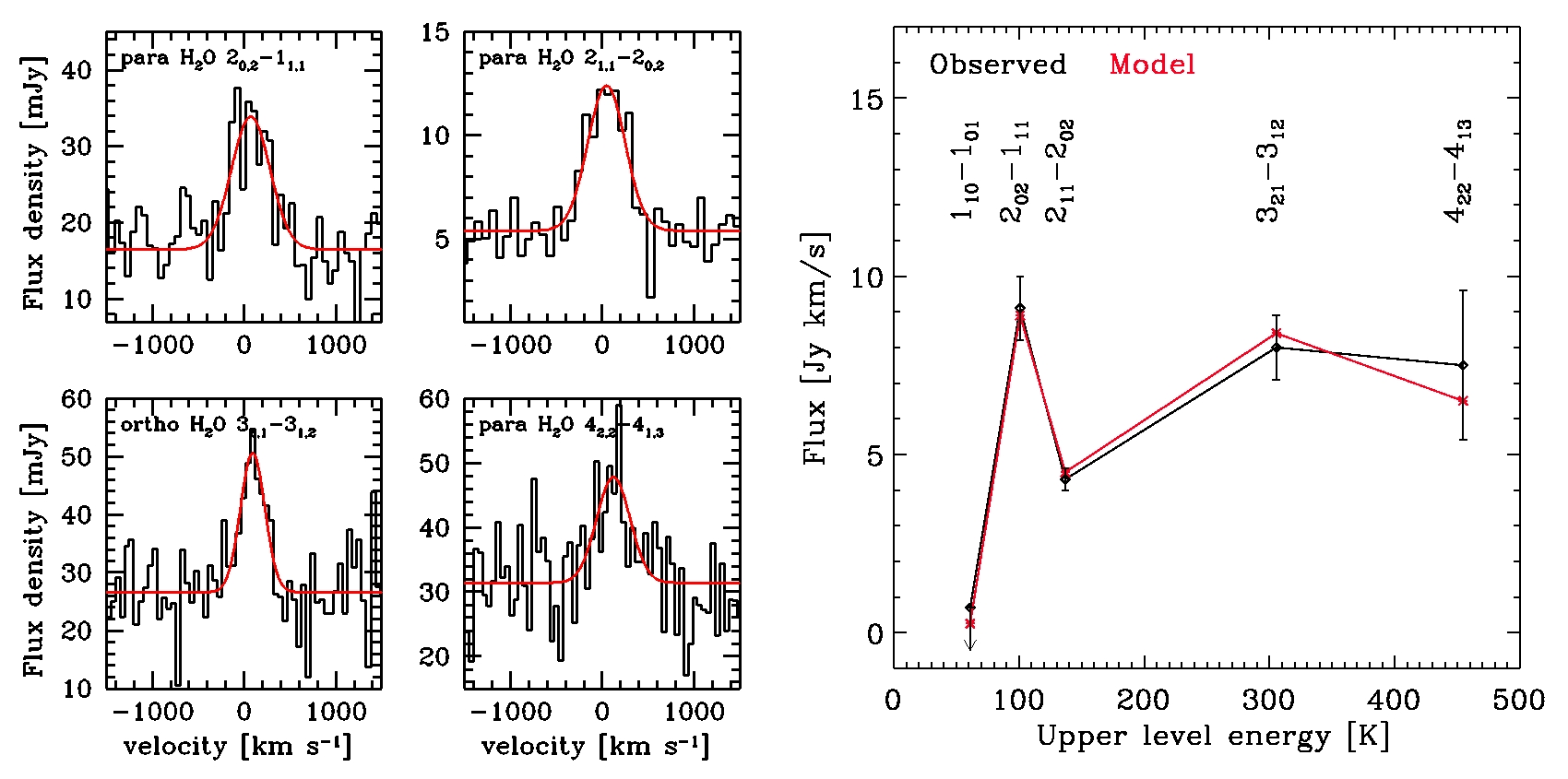Daily Image
05-10-2011First detection of water at z=3.9 in a lensed QSO
| Submitter: | Alicia Berciano Alba |
| Description: | Water is expected to be one of the most abundant molecules in molecular clouds in galaxies, and to play an important role in the hot (T > 230K) gas-phase chemistry, hence influencing the overall chemical composition of the gas. In addition, theoretical studies suggest that water is the dominant cooling agent at high densities and high temperatures, facilitating the gravitational collapse of molecular cloud cores that is required to form stars. Until now, (single) water lines at high-z were only found in two gravitationally lensed systems at z=2.6 (Impellizzeri et al. 2008) and z=2.3 (Omont et al. 2011). The new record holder is the (also gravitationally lensed) QSO host galaxy APM08279+5255 at z=3.9, in which water line emission has been recently reported by our group and two other teams (Lis et al. 2011, Bradford et al. 2011). We used the Plateau de Bure millimeter interferometer to obtain high resolution (40 MHz), 3.6 GHz bandwidth spectra of four rotational water lines in APM08279+5255. This unprecedented detection of multiple water lines in a high-z object has allowed us, for the first time, to explore the use the water molecule as a tracer of the physical properties of the ISM at high-z. Combining these observations with a 3D radiative transfer code, we find that the water is excited in clumps of warm, dense gas (Tg ~ 105+-21K, nH = 3.1+-1.2 x 10^6 cm^-3) located in an extended region of high 100micron opacity (0.9+-0.2). The water excitation is dominated by collisions in the lowest lines, and by an intense FIR radiation field produced by very hot dust (Td~220K) in the two highest lines. Since only collisionally excited emission contributes to gas cooling, this indicates that water cooling in this system is unimportant compared with CO cooling. Given the large size of the water emitting region (~550 pc, after correcting for the lensing magnification), its high opacity, and the inefficiency of X-rays to heat dust, we also conclude that the high dust temperature observed in APM08279+5255 is most likely due to widespread star formation rather than the central AGN. In addition, the star formation process is expected to be close to Eddington-limited because the FIR radiation pressure in the clumps of our model exceeds the thermal gas pressure by about an order of magnitude. Finally, since regions of several 100pc radius with high 100micron optical depths are locally found only in the ceter of ULIRGs, the fact that in this study we find such a region in a QSO provides support for the scenario where ULIRGs form the birthplaces of QSOs. "Water vapor emission reveals a highly obscured, star forming nuclear region in the QSO host galaxy APM 08279+5255 at z=3.9", P. van der Werf, A. Berciano Alba, M. Spaans, A.F. Loenen, R. Meijerink, D.A. Riechers, P. Cox, A, Weiss & F. Walter Accepted for publication in ApJ letters: http://adsabs.harvard.edu/abs/2011arXiv1106.4825V |
| Copyright: | Leiden Observatory/ASTRON |
| Tweet |  |
